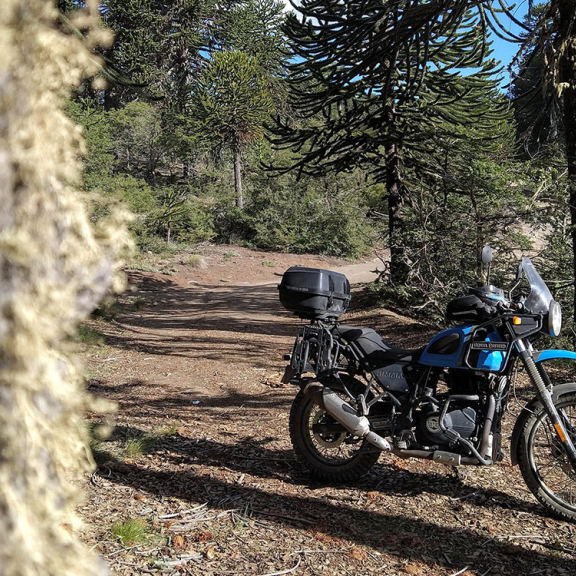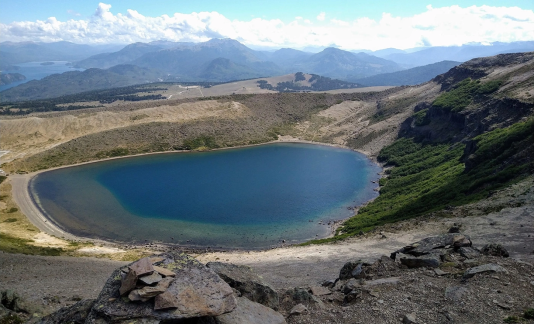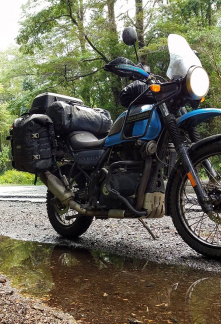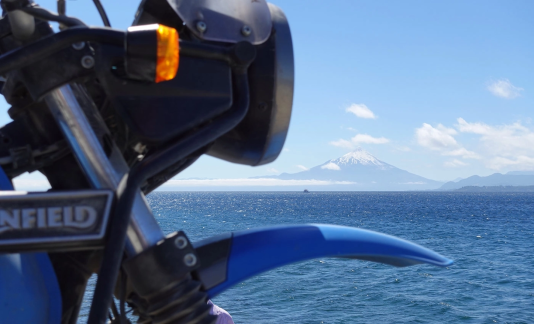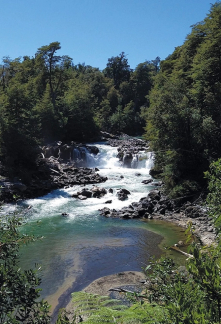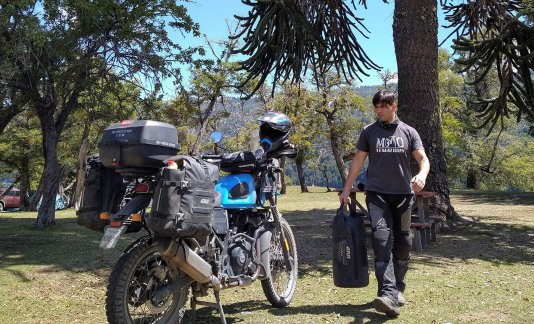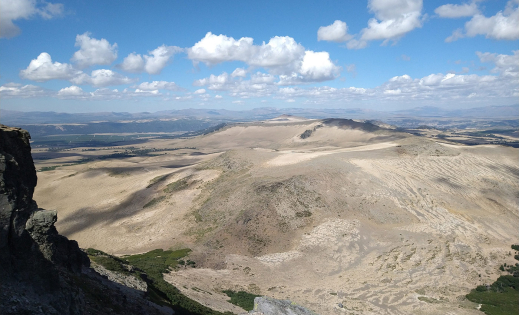In the North of Chilean Patagonia
Motorcycle trip in Chilean Patagonia
There is no doubt that the great tourist attraction of Chilean Patagonia for all trail bikers is the world-famous Carretera Austral. But there is more, much more.
It was in February of this year 2021 that I decided to travel to the south of Chile again, but this time to places that were not so touristy and that on more than one occasion I had overlooked only to repeat the route mentioned in the first paragraph. – Because once you have been there, who does not like to be in Carretera Austral again!
I didn’t get up early so it must have been past noon when I put on first gear and started my vacation trip, a vacation conditioned by COVID, something that pleasantly both for my route and itinerary, added to my outdoor liking, would affect me not even a bit.
In the Los Lagos Region, araucarias are replaced by coihues, ulmos and other trees that are very characteristic of southern Chile. I must say that this is one of my favorite regions of Chile. It makes me stop at every moment on the side of the road or even in the middle of a bridge just to observe, listen and breathe an air that I will never find in Santiago.
After doing part of the Llanquihue Lake circuit (the second largest lake in Chile) and almost at sunset, I set up my tent on the banks of the Puelo River whose main attraction is fishing and of course, the peace that you breathe there.
It was in Río Puelo where I met Cheston and Tiare, a young couple who was travelling in a fully loaded BMW F650 GS. With them I shared several bonfires and some unsuccessful fishing attempts. We also enjoyed some rides around the sector, deciding after a couple of days, to embark to cross Lake Tagua-Tagua and reach the town of Segundo Corral near the border with Argentina, where the Andes Mountains continue to decline.
This is definitely an area worth visiting, especially for the adventure that always involves having to cross a piece of water by ferry ($3 usd per bike/4 daily departures).
I had only a few days left on this two-week trip and I was determined to keep discovering new places. This is definitely an exercise that one should do more frequently and not always vacation in the same place. That is how I arrived at the Los Copihues campsite on Lake Puyehue. A campsite with very good comments on Google, and boy were they right… It is the classic campsite that combines the wild with the modern, if by modern you can call it having spacious bathrooms, a mini market, a shower with hot water 24 hours a day and a power outlet every two places. That was enough for me to get through the last days of my vacations and that’s how it was.
Failed fishing attempts, bonfires accompanied by some wine, sausages or hamburgers, starry nights and the song of insects and the occasional owl.
After three days in that magnificent place, I put on my boots, dismantled the tent, and went back to the Panamericana.
Days later I would be in Melipilla, remembering and remembering, like now.
I left from Melipilla, about 90 kms from Santiago, the capital. My first big stop was 160 km south of Santiago at a restaurant called Fuente Correa near Chimbarongo, on the banks of the Pan-American Route or Route 5. There, I had a tasty sandwich with fries.
Later I would find out that Fuente Correa is a fairly well-known restaurant, I don’t know if this fame relies on its food -which was amazing-, or its style and personality set in the 60s.
After spending my first night in Los Angeles (still on the Pan-American highway), I took the detour that leads from Curacautín to the town of Icalma, in the Araucanía Region, where I intended to camp and surround myself with ancient araucarias.
The Araucaria is the emblem tree of Chile. Specimens whose age exceeds 1000 years have been studied. It is incredible to think that even 500 years before the discovery of America by Christopher Columbus in the year 1492, there was already a growing araucaria which is still alive today. How about that?
After a few days of camping and after visiting the crater of the extinct Batea Mahuida volcano whose main characteristic, in addition to marking the border with Argentina, is the lagoon housed inside as a result of the snowfalls and constant winter rains, I went to my second point of interest, Río Puelo, distant about 300 kms to the south and located in another region.
Perhaps it is for that very reason and not only because of the gravel (ripio) that there are not many who venture to know that area. Better for me, especially at that time of a pandemic.
Together with Cheston and Tiare we visited some local attractions and we even ventured to do some “enduro” on our motorcycles, almost wanting to reach Argentina by a NON-authorized road. Something that of course we didn’t do. After another two nights of camping we said goodbye wishing each other good luck. They were going south to make the Carretera Austral, while I had to start returning to Melipilla.
The return was made through the other half of the Lake Llanquihue circuit, the half that connects Ensenada with the city of Puerto Varas from where you can see the majesty of the Osorno volcano, almost as if claiming the domain of that lake.
Then go to Frutillar, where, as in Puerto Varas and other nearby cities, you can see classic German architecture, this because much of southern Chile was colonized by Germans (mid-20th century).
The protagonist
Javier Valenzuela
The protagonist
Javier Valenzuela
Passionate and experienced motorcyclist, Javier (idayvueltaenmoto) has traveled the world crossing 19 countries, riding his reliable Himalayan.
Motorcycle equipment
like an adventure
GIVI offers a wide range of accessories
dedicated to the most extreme situations
GIVI offers a wide range of accessories
dedicated to the most extreme situations

